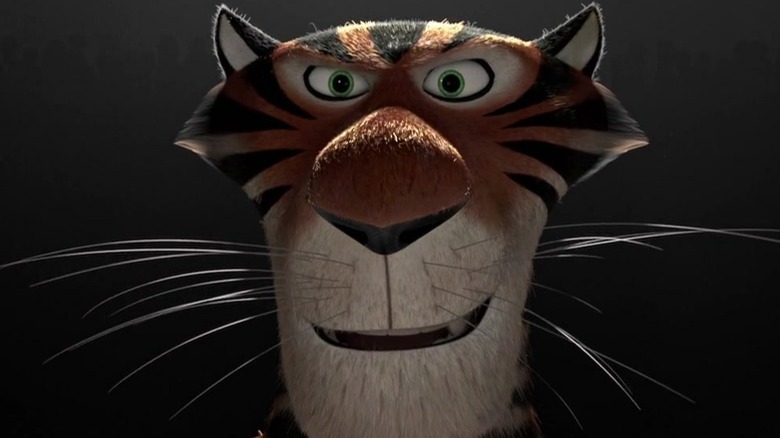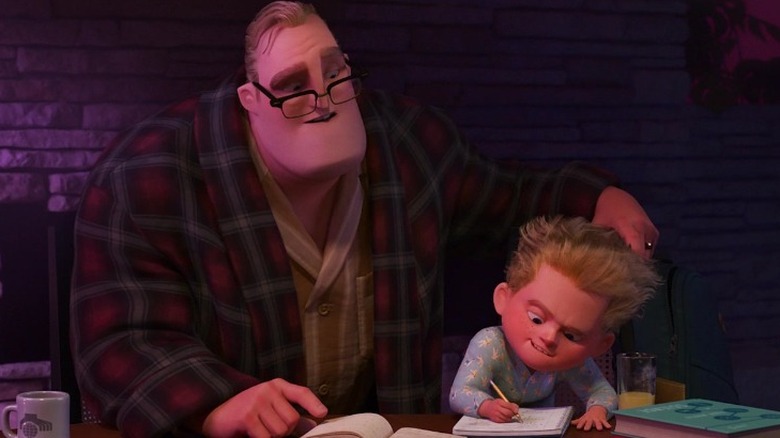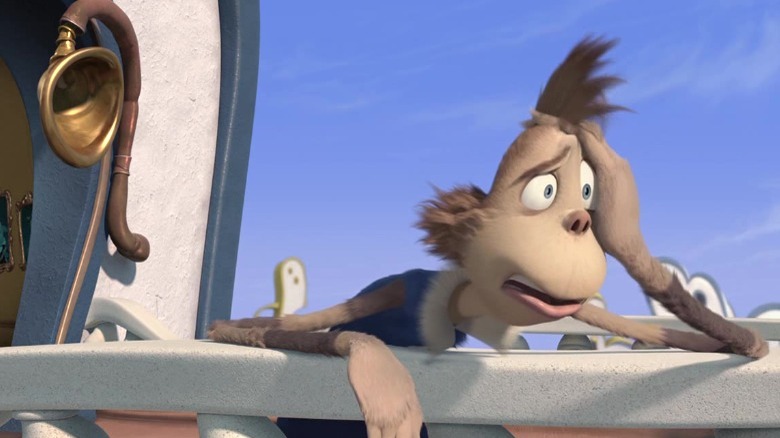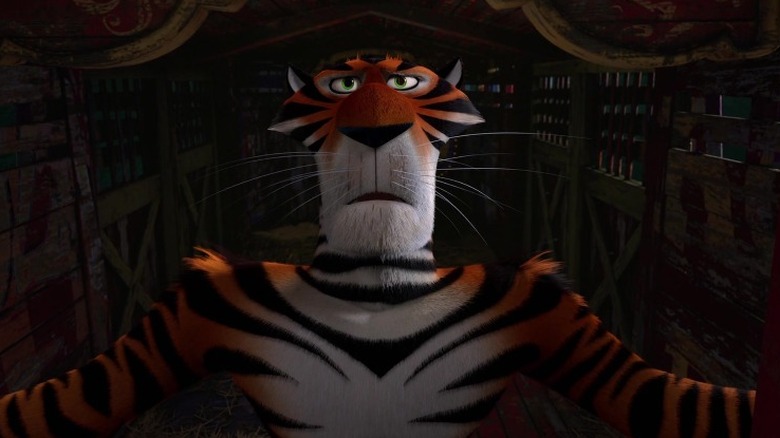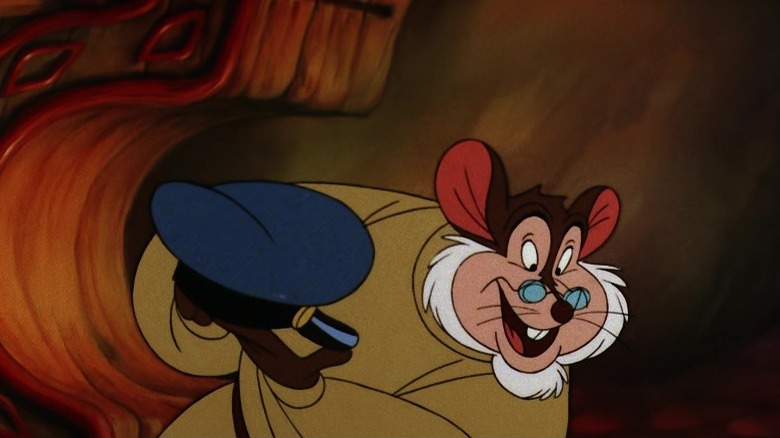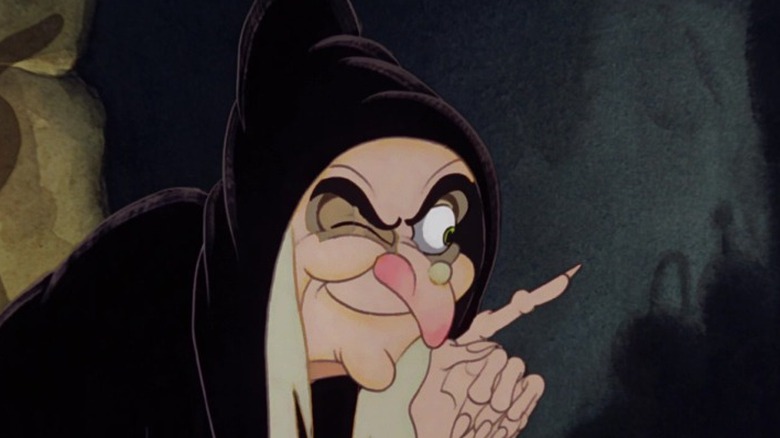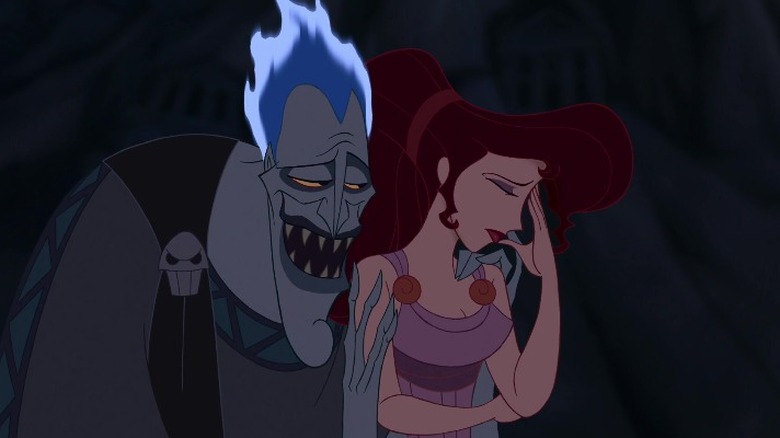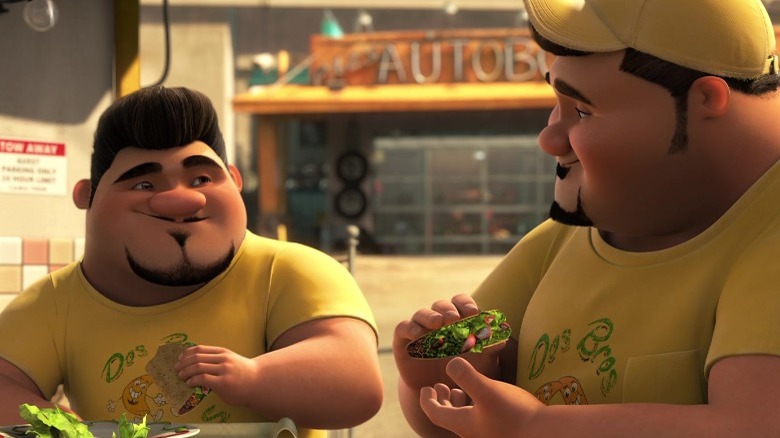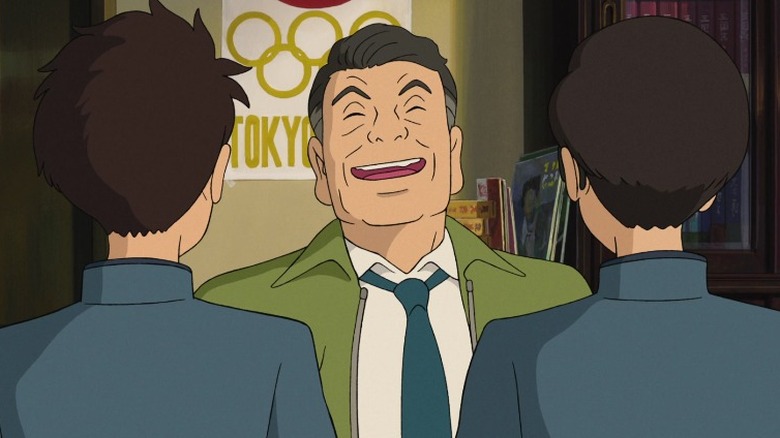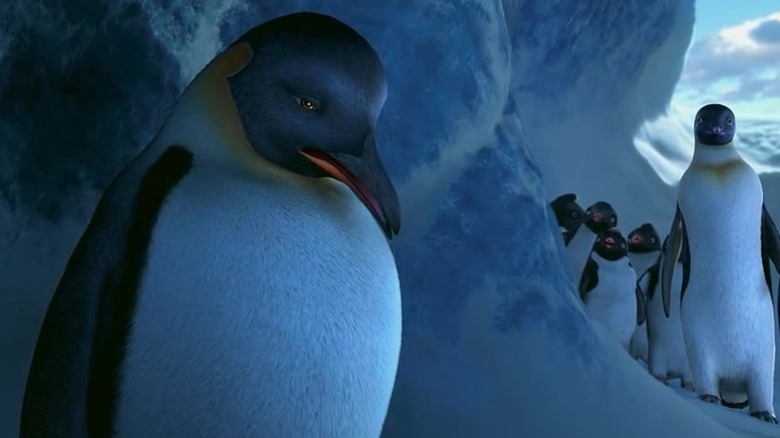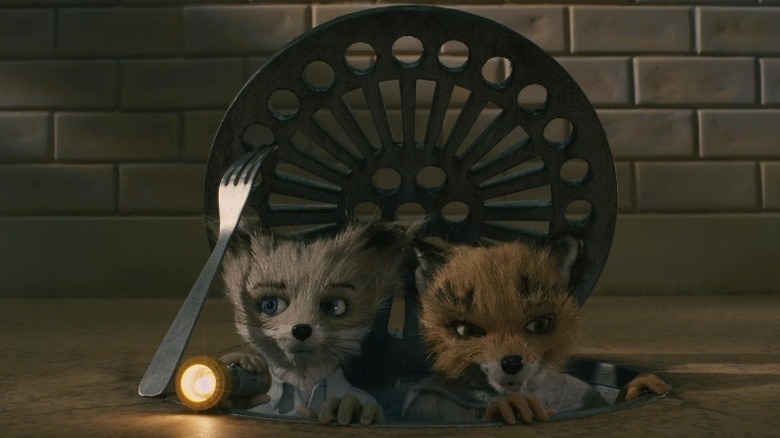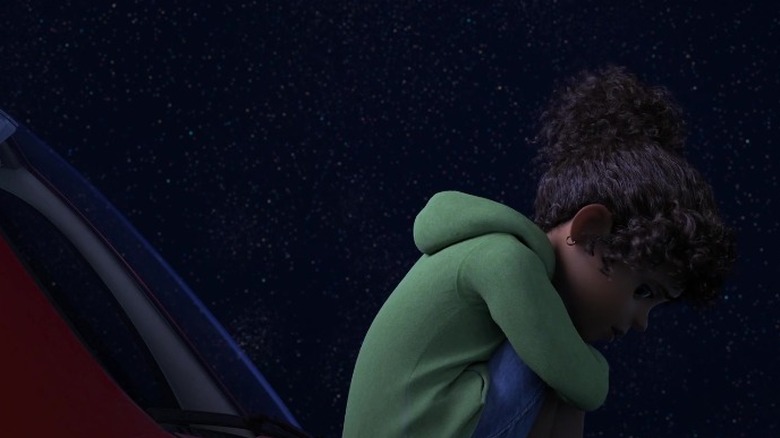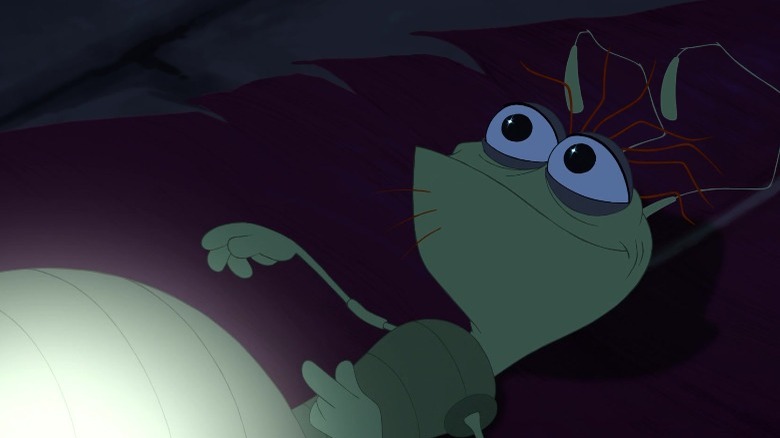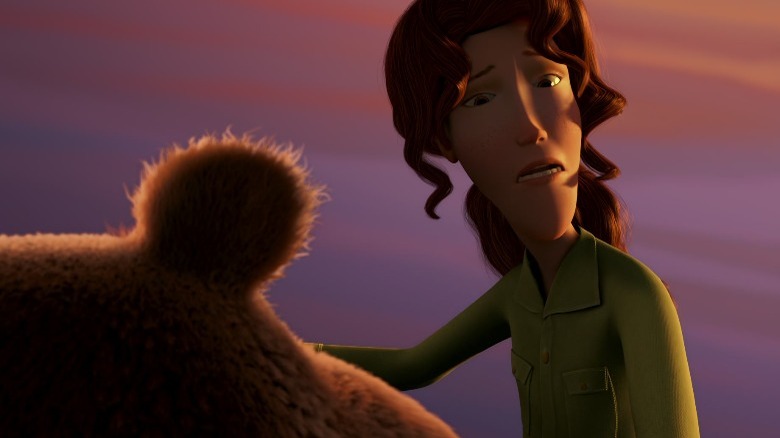Animated Movie Subplots Better Than The Actual Plots
There are plenty of films where the subplots are better than the actual plot, and we can think of several animated movie subplots that fit the bill. Whether it's because these movies can't decide what they're about, or the hero isn't compelling enough to hold up the entire runtime, these films are all a bit disappointing. But every one of these cartoons has a redeeming quality: a subplot that is frankly more interesting than anything else in the film. In some of these movies, the main plot flat-out sucks. In others, there's nothing wrong with the overarching plot; it's just that the side characters and their stories keep stealing the scene.
Want to know how DreamWork's adaptation of "The True Meaning of Smekday" chose completely the wrong protagonist, or why Vitaly is deeper than any other character in "Madagascar 3"? Here are all the B plotlines in animation that we wish could have been A's.
Mr. Incredible's struggles with fatherhood
When "Incredibles 2" was released, it was awesome to finally see Helen (Holly Hunter) doing super work. The sequel gave us some of the best-ever action scenes in animation.
Yet somehow, we can't help but feel like Helen's plotline is missing something: the unique intersection of superheroes and family from the first film. Director Brad Bird told Deadline that his guiding principle for both "Incredibles" films was, "You don't do something fantastic very long without doing something mundane," and vice versa. But it seems some of Helen's scenes in "Incredibles 2" don't quite hit that sweet spot. Outside of the brilliant moment where Dash (Huck Milner) calls his mother while she's at work, we don't see much of the humdrum in Helen's scenes. Her hunt for the Screen Slaver is played straight-faced, rarely ever subverting superhero tropes (although it does at least subvert stereotypical gender roles).
Luckily, the subplot where Bob (Craig T. Nelson) looks after the kids contains a perfect blend of the banal and the fantastic. It offers plenty that any parent can relate to, such as teenage curfews and math homework, alongside elements that (we hope) no parent has ever needed to deal with (e.g., your infant mauling a defenseless raccoon). Bob's arc walks the same knife's edge that made the first "Incredibles" movie so ... well, incredible. We only wish that a bit more of the mundane had been injected into Helen's parts; then maybe "Incredibles 2" could have been elevated from "good" to "great."
Mayor McDodd's attempts to warn Whoville
"Horton Hears a Who!" is about an elephant named Horton (Jim Carrey) trying to protect a tiny speck that contains the entire city of Whoville. All the scenes borrowed from the original Dr. Suess book are more or less faithful, while all the scenes that the filmmakers added fall squarely into two camps: the scenes focusing on the mayor of Whoville (which are fascinating), and the additional Horton scenes (which are filler). That's because, up until Horton loses the speck in an endless field of clover, the stakes simply aren't that high for Horton. Since the filmmakers were saving that fateful scene for the end, that doesn't give Horton much to do.
However, the stakes are plenty high for Mayor McDodd (Steve Carell) down in Whoville. A tiny temperature change in Horton's world can cause a catastrophic weather event in Whoville. The mayor is the only person who can warn Whoville about its impending destruction, but all the Whos — including the mayor's own family — laugh it off as impossible. Combine that with Mayor McDodd overcoming his social anxiety and learning to listen to his taciturn son, and the mayor has more than enough subplots to keep him busy for the entire film. While Horton's arc mostly stalls until the clover-field scene, the mayor's arc is building toward it. All of the cogs in the mayor's plotline come together for an intense and immensely satisfying climax.
Vitaly rediscovering his passion
The plot of "Madagascar 3: Europe's Most Wanted" leaves much to be desired. It jumps frenetically between flashy chase sequences and running gags with an ever-growing cast of characters. At last count, there were three lemurs, four penguins, two primates, four circus performers, and five animal control agents all competing for attention, and that's not even counting the puppies. Naturally, the four leads hardly get any development. The only character who is properly fleshed out is Vitaly (Bryan Cranston), who is ironically not even a main character.
On the surface, Vitaly seems like a bitter old tiger in charge of a dead-end circus, but he used to love his work. His old circus act worked according to a miraculous cartoon logic that allowed him to jump through impossibly small hoops (like, engagement-ring size), and the hoops kept getting smaller with every show, because Vitaly was never satisfied. Vitaly kept pushing himself — and his luck — until one day he attempted to dive through a flaming hoop and discovered his limitations the hard way. Badly burned and deeply humiliated, the tiger stopped taking risks and stopped caring.
Later in the story, Alex (Ben Stiller) convinces him to give it another try, and Vitaly remembers why he fell in love with the show business. After he pulls off his most impossible stunt yet, Vitaly transforms into the boldest and most hopeful of the circus characters, not to mention the most dynamic character in the whole movie.
Papa Mousekewitz mourning his lost son
It's hard not to like Fievel Mousekewitz (Phillip Glasser) from "An American Tail." With his ridiculously long sleeves, he looks vaguely like Dopey, and who doesn't love Dopey? However, for most of the movie, Fievel is a passive character, which means the plot is kind of scatterbrained. As Fievel wanders aimlessly throughout New York City, he often tags along behind other characters and gets swept up in their dreams instead of his own. For example, he helps the mice with their plan to drive all the cats out of New York City, and he follows Tony (Pat Musick) around while Tony chases girls. Every now and then, when it's convenient for the plot, Fievel remembers that he's looking for his lost family.
Meanwhile, the subplot about Papa Mousekewitz (Nehemiah Persoff) and the rest of Fievel's family is the real emotional anchor of the movie. Papa is the one who feels all the weight of their separation. At first, Papa assumes his son has drowned, so he simply tries to help his family get on with their lives. But near the end of the movie, when he hears some mice calling for "Fillie" Mousekewitz, he starts to nurture the hope that maybe his son is alive. This leads to one of the best scenes of the movie, where Papa wanders the ruins of a burning building, afraid that he has lost his son a second time.
The Evil Queen's obsession with beauty
"Snow White and the Seven Dwarfs" is absolutely groundbreaking, and all of animation owes it a debt.
Still, it's far from perfect. Snow White is a passive and frankly boring character. Even though she's supposed to be the heroine, she's out cold for the entire climax of the movie. And unlike Cinderella, she doesn't mind cooking and cleaning for a bunch of slobs. Aside from the scenes where the Huntsman spares Snow White's life, the Evil Queen arrives with the poison apple, and the Prince delivers his magic kiss, nothing much happens to Snow White. Or rather, that's the problem: Snow White doesn't make things happen; things happen to her. The middle of the movie is mostly filled with scenes of the dwarves coming home from work, washing up, and leaving for work again. To be honest, there's hardly a plot at all.
Whenever the plot does happen, though, the Evil Queen is always the one driving it forward. This villain explores surprisingly deep themes, or at least deeper than anything Disney had previously done in its lighthearted shorts. The Evil Queen embodies an amusing, yet tragic irony: she makes herself ugly in order to destroy the "fairest in the land." Sure, maybe the Evil Queen knew the disguise would be only temporary, but still, it's almost laughable to hear her declare, "Then I'll be fairest in the land!" while wearing the face of an old hag. There's a metaphor in there somewhere — perhaps a lesson about how vanity will tear you apart?
Meg's secret deal with Hades
Since Disney's "Hercules" was released in the wake of excellent Disney leads like Aladdin and Simba, it's easy to see why the titular character felt a bit underwhelming. Not every viewer could get invested in a clueless guy with superhuman strength. For much of the movie, Hercules (Tate Donovan) is either frustratingly naive or hopelessly self-absorbed. He only gets interesting once he is stripped of his powers and forced to confront his flaws, but that plot point wouldn't have been possible without Meg (Susan Egan), who is the real highlight of this film.
Meg knows all the rules of a Disney romance and plays along with them almost as cleverly as she plays Hercules. At times, Meg seems headed down the well-trod path of a Disney love story, but it's all an act. She's trying to get Hercules to let down his guard because she secretly works for Hades (James Woods). As you might expect, Meg starts to fall in love with Hercules for real, but even that is done with a wink of self-awareness. ("It's too cliche!" Meg says in the middle of her love song.) And her crush on Hercules becomes even more complicated if you consider that she has a good reason not to trust him. Her previous boyfriend deserted her, even after she sold her soul to Hades to save his life. Now that's a Disney character's backstory we'd love to see onscreen.
Tito and Angelo's taco business
Why anybody thought the world needed a movie about racing snails, we have no idea. "Turbo" is the third animated DreamWorks movie about bugs (technically mollusks, but they're still creepy-crawlies). The plot of the movie spends so much time showing off Turbo's (Ryan Reynolds) coolness that the hurdles he needs to overcome seem insignificant. It's difficult to care about the hero because he is so self-centered and patronizing toward anybody who doesn't share his enthusiasm for racing. Sure, the film's ending acknowledges that Turbo has gotten a little cocky, but it feels like too little, too late.
The only characters who stand out are Tito (Michael Peña) and Angelo (Luis Guzmán), the brothers that own Dos Bros Tacos. Tito is a fanboy who wants to enter his pet snail in the Indianapolis 500 to reel in more customers for their taco business, but Angelo is dubious, not least because Tito's last publicity stunt involved dressing up as "Taco Man" and his sidekick, the Churro. The subplot with the two brothers is one of the few aspects of the movie that feels sincere. Though it may seem like Tito is just looking for an excuse to get his snail-racing fix, he genuinely admires his brother's ability to make the perfect taco. Naturally, when Tito takes all their life savings and uses it to register his snail in the race, Angelo freaks out — it's no wonder the poor guy has gray streaks in his hair.
The scene-stealing side characters From Up On Poppy Hill
The subplots in "From Up On Poppy Hill" aren't really subplots, per se. Most of the side characters in this film don't have arcs. Instead, they just populate the movie with a believable background, which is exactly what the movie needs. However, the supporting cast ends up stealing the spotlight from the two leads (Umi and Shun, two schoolchildren in 1963 Japan). The romance between Umi and Shun isn't bad by any means; it's just that Umi's neighbors and schoolmates are more interesting.
The side characters are a colorful bunch, and the performances by the voice actors in the English language dub only add to this. There's Sachiko (Aubrey Plaza), the absent-minded artist, and Miki (Gillian Anderson), the workaholic doctor. Meanwhile, the president of the Philosophy Club (Ron Howard) is delightfully over the top. Especially outstanding is Beau Bridges in his performance as Chairman Tokumaru. At first, he seems like a back-slapping businessman with no qualms about tearing down the school clubhouse, but later he decides not to demolish it because he admires the children's gumption. Also, one of the film's funniest moments is when two nameless kids from Archaeology Club say, "We have to get people interested in the Paleolithic Period," before jumping to their feet and shouting, "To the library!"
Memphis dropping his son as a baby
George Miller's "Happy Feet" doesn't have one main plot so much as two separate arcs that compete for attention. The first one focuses on the penguin Mumble (Elijah Wood) as he learns to embrace his tap-dancing skills instead of hiding them. The second is about Mumble's quest to find the "aliens" (i.e., humans) who have been snatching all the fish from the penguin's waters. Both are fascinating storylines, but the movie can't seem to make up its mind about which is more important. The filmmakers certainly try their best to reconcile the two plot threads, but the end result feels a bit distracted.
Far more satisfying is the B plotline involving Mumble's dad Memphis (Hugh Jackman). Memphis dropped Mumble as an egg, and even though Memphis pretended it never happened, he still carries that guilt. Whenever Mumble's dancing turns him into a penguin pariah, Memphis feels like it's his fault there's something "wrong" with his son, so he urges Mumble to try and fit in. When that fails, Mumble is banished, and Memphis knows he is to blame. It's not until their reunion at the end of the movie, when Mumble teaches his father how to dance, that Memphis finally gets his chance at redemption. Memphis is easily the deepest character in the movie, and he's the reason that, despite its messy second act, "Happy Feet" at least nails the ending.
Ash and Kristofferson's cousin rivalry
There are a lot of great parts of "Fantastic Mr. Fox," but none can beat the rivalry between Ash (Jason Schwartzman) and his cousin Kristofferson (Eric Chase Anderson). Whenever the two need to share a room, Ash tells Kristofferson to go sleep under the train table. Another scene employs a clever twist: it's not the awkward and sensitive Kristofferson who gets bullied, but Ash, the wannabe tough kid. Even funnier is the fact that Kristofferson can trounce the bully effortlessly. Ash returns the favor by rescuing Kristofferson from the farmer's attic. By the end, Ash gives Kristofferson his grudging respect and what his cousin refers to as "the apology you owed me but never actually said." These two are so hilarious and endearing that they outshine everything else in the movie.
Don't get us wrong, the main plotline (Foxy's midlife crisis) is extremely well-written. George Clooney is wickedly funny as Mr. Fox, and his performance also strikes an emotional chord. But despite all the carefully constructed setup for Foxy's acceptance that his chicken-stealing days are over, there are a few scenes near the end that seem to contradict the movie's message. The elaborate rescue in the film's climax doesn't seem all that different from Foxy's attempts to provoke the farmers earlier in the film, at least at a glance.
On the other hand, Ash and Kristofferson's subplot walks the tightrope between dry humor and family drama perfectly, never losing its balance.
Tip's search for her missing mom
The movie "Home" (based on Adam Rex's novel "The True Meaning of Smekday") might have been an interesting parody of post-apocalyptic films. DreamWorks was onto something when they decided to make a movie about incompetent, bureaucratic aliens uprooting life on Earth and tearing apart families. But any hope of doing the book justice went down the drain when they chose to make one of these aliens the movie's protagonist. The film tries to play Oh (Jim Parsons) as an underdog, but he is so unbearably obnoxious that we can't help but feel that he totally deserves to be an outcast.
This is especially frustrating because the film already had a perfectly good candidate for its main character: Tip, a teenager separated from her mom by the invasion. In fact, she was the main character in the original book, so it's doubly perplexing why they changed it. Alas, Tip's quest for her mother is only a subplot. Still, whenever she does get to take center stage, Tip (Rihanna) is undoubtedly the best part of the movie. Her first appearance paints a rather dark picture of a disillusioned teenager holed up in her booby-trapped apartment as she starts to realize that her mother isn't coming back. Plus, the moment Tip and her mom are reunited, which has no sound except for a hopeful song, is surprisingly moving.
Ray's impossible dream
"The Princess and the Frog" was a much-appreciated return to traditional animation for Disney, and it was nice to see another film by the same directors as "Aladdin" and "The Little Mermaid." But the plot of the movie is all over the place. There are a lot of characters to juggle, each with their own desires: Louis the alligator wants to play jazz, Charlotte wants a prince, and Prince Naveen wants "the green." Disney tries its darndest to tie everything together with Tiana's dream. But the problem is that Tiana (Anika Noni Rose) has no personal connection to the villain whatsoever, so when she finally meets him at the end of the movie, it feels underwhelming.
Yet Ray the firefly (voiced by Jim Cummings) is one character in this movie who really shines (no pun intended). Ray has a dream, too, but his is physically impossible: he wants to cozy up next to a firefly named Evangeline. None of the other characters have the heart to break it to him that "Evangeline" is actually just a far-off star in the night sky. Somehow, Ray manages to be not just comic relief, but also a surprisingly tragic character, especially when the villain squashes him underfoot. After an unflinching portrayal of Ray's death, the film finds the perfect way to resolve this animated subplot when it wordlessly confirms that Ray's spirit joins Evangeline in the night sky.
Beth releasing her bear into the wild
On paper, "Open Season" probably seemed like a great idea. The premise was promising. The film is about a domesticated bear named Boog (Martin Lawrence) who is released into the wild after being pampered all his life by his owner, Beth (Debra Messing). The film starts to scratch the surface of a fascinating dilemma: Is there any place for a bear too wild to be tamed but too tame to be wild? Unfortunately, that idea gets lost somewhere along the way. Beth isn't even a main character. She disappears after the first 20 minutes, only returning for the final scene. While the film occasionally touches on Boog's growing realization that he can't live in Beth's garage anymore, the second act quickly gets distracted by Boog's antics in the wilderness.
This is all the more disappointing because the subplot about Beth's decision to let go of her beloved pet is quite compelling. There's a surprisingly dark scene where Boog is going on a destructive rampage while a trigger-happy hunter aims at him, so Beth needs to fire the first shot. She must tranquilize Boog before he causes any more damage. She then airlifts him to the middle of the forest without getting a chance to say a proper goodbye. Yet this powerful moment is over as soon as it begins, which is enough to make any viewer mourn the missed opportunity. It's yet another animated movie subplot that could have transformed the entire movie.
